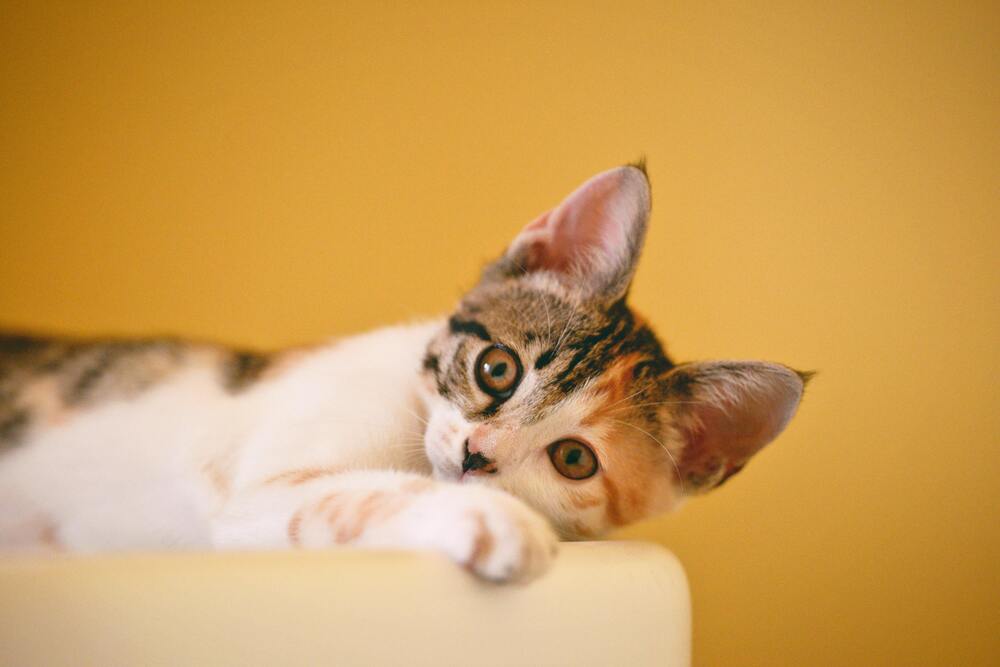Cat litter training is an essential part of raising a healthy and well-adjusted feline companion. While many cats naturally gravitate towards using a litter box, some may require more guidance and patience. This article will provide a comprehensive guide on how to litter train your cat, including tips, statistics, and best practices to ensure a smooth and successful training process.

Introduction to Litter Training
Litter training involves introducing your cat to a litter box and encouraging them to use it consistently. This process is crucial for maintaining cleanliness and hygiene in your home 🏠. Cats are generally clean animals and prefer to bury their waste, making litter boxes an ideal solution 🐾.
Benefits of Proper Litter Training
- Hygiene and Cleanliness: Proper litter training keeps your home clean and odor-free 🚮.
- Reduced Stress: Cats are less stressed when they have a clean and accessible litter box 🌟.
- Prevents Accidents: Well-trained cats are less likely to have accidents outside the litter box 🚨.
Step-by-Step Guide to Litter Training
- Choose the Right Litter Box: Ensure the litter box is large enough for your cat to move around comfortably 📦.
- Select Appropriate Litter: Cats often prefer unscented, clumping litter for ease of use 🌿.
- Place the Litter Box Correctly: Position the litter box in a quiet, accessible area 🏠.
- Introduce Your Cat to the Litter Box: Place your cat in the litter box after meals or naps 🐾.
- Encourage Good Habits: Praise and reward your cat for using the litter box correctly 🎁.
Comparison of Litter Types
| Litter Type | Benefits | Drawbacks |
|---|---|---|
| Clumping Litter | Easy to clean 🧹, reduces odor 🚮 | May be harmful if ingested 🚫 |
| Non-Clumping Litter | Safer for kittens 🐱, eco-friendly 🌿 | More difficult to clean 🤔 |
| Silica Gel Litter | Absorbs moisture well 💧, odor control 🚮 | Can be expensive 💸 |
Statistics on Litter Training
- Success Rate: Most cats can be successfully litter trained with patience and consistency 📈.
- Common Mistakes: Failure to clean the litter box regularly is a common mistake that can lead to accidents 🚮.
- Litter Box Size: A litter box should be at least 1.5 times the length of your cat 📏.
Tips for Effective Litter Training
- Be Patient: Litter training can take time, so be patient with your cat 🕒.
- Maintain Cleanliness: Scoop the litter box daily to keep it clean and inviting 🧹.
- Avoid Punishment: Never punish your cat for accidents; instead, encourage good behavior 🐾.
Common Challenges in Litter Training
- Accidents Outside the Litter Box: These can occur due to stress, medical issues, or poor litter box maintenance 🚨.
- Litter Box Aversion: Cats may avoid the litter box if it's not clean or if they prefer a different type of litter 🤔.
- Multiple Cats: Managing multiple cats can be challenging, requiring more litter boxes and attention 🐈.

Comparison of Training Methods
| Method | Benefits | Challenges |
|---|---|---|
| Gradual Introduction | Encourages natural behavior 🐾, reduces stress 🌟 | Requires patience and consistency 🕒 |
| Positive Reinforcement | Effective for encouraging good habits 🎁, improves cat-owner bond 🐾 | May not work for all cats 🤔 |
| Confinement Training | Helps focus the cat on the litter box 🚫, quick results 📈 | Can be stressful if not managed carefully 😬 |
Future Trends in Litter Training
- Automated Litter Boxes: These can make maintenance easier and reduce odors 🚮.
- Eco-Friendly Litters: More pet owners are opting for sustainable litter options 🌿.
- Advanced Training Techniques: Incorporating clicker training or other behavioral techniques to improve litter box use 📚.
Toilet Training as an Alternative
Some cat owners opt for toilet training as an alternative to traditional litter boxes 🚽. This involves gradually transitioning your cat from a litter box to using the toilet, which can be challenging but rewarding 🐾.
Statistics on Toilet Training
- Success Rate: While challenging, many cats can be successfully toilet trained with the right approach 📈.
- Common Challenges: Requires patience and careful transition to avoid accidents 🚨.
Comparison of Litter Box and Toilet Training
| Method | Benefits | Challenges |
|---|---|---|
| Litter Box Training | Easy to implement 📦, widely accepted 🐾 | Requires regular cleaning 🧹 |
| Toilet Training | Reduces litter box maintenance 🚮, unique experience 🚽 | Can be difficult to achieve 🤔 |
Managing Multiple Cats
When managing multiple cats, it's essential to provide enough litter boxes and maintain cleanliness to prevent territorial issues 🐈. A general rule is to have one litter box per cat plus one extra 📏.
Statistics on Multi-Cat Households
| Statistic | Value | Notes |
|---|---|---|
| Number of Litter Boxes Needed | One per cat plus one extra 📏 | Reduces competition and stress |
| Common Issues in Multi-Cat Households | Territorial marking and litter box avoidance 🚨 | Can be managed with proper litter box placement and cleaning |
Impact of Litter Training on Cat Health
Proper litter training can significantly impact a cat's health by reducing stress and preventing accidents 🌟. Regular cleaning of the litter box also helps prevent the spread of diseases 🧹.
Comparison of Health Impacts
| Health Impact | Litter Box Training | Toilet Training |
|---|---|---|
| Stress Reduction | Effective in reducing stress 🌟 | May increase stress during transition 😬 |
| Disease Prevention | Helps prevent disease spread 🧹 | Requires careful hygiene practices 🚮 |

Remarks
Litter training is a crucial part of cat ownership, requiring patience, consistency, and the right approach 🐾. By understanding the benefits and challenges of litter training, you can ensure your cat remains happy and healthy. Whether you choose traditional litter boxes or explore alternatives like toilet training, the key is to create a comfortable and inviting environment for your feline friend 🌟.
Additional Considerations
| Consideration | Pros | Cons |
|---|---|---|
| Cost of Litter | Can be affordable with the right choice 📊 | Some litters may be expensive 💸 |
| Time Commitment | Requires regular cleaning and maintenance 🕒 | Can be time-consuming 🤔 |
| Environmental Impact | Eco-friendly options are available 🌿 | Traditional litters may have environmental drawbacks 🌎 |
In summary, litter training is a vital aspect of cat care that can significantly impact your cat's behavior and well-being 🐾. By following the steps outlined in this guide and staying informed about the latest trends and best practices, you can ensure a successful litter training experience for both you and your cat 🌟.
Long-Term Effects of Litter Training
Proper litter training has long-term effects on a cat's life, influencing their ability to interact with their environment and maintain hygiene 🌎. It also impacts their emotional resilience and adaptability, making them more capable of handling stress and change 🌟.
Role of Breeders and Owners
Both breeders and owners play crucial roles in socialization and litter training. Breeders should start socialization early, while owners should continue and expand on this foundation 🐾. Collaboration between breeders and owners can ensure that kittens receive comprehensive training from an early age 📈.
Statistics on Long-Term Benefits
| Statistic | Value | Notes |
|---|---|---|
| Reduced Behavioral Issues | 75% reduction in fear-based behaviors 🐕 | Result of early and comprehensive training |
| Improved Trainability | 90% of well-trained cats respond better to commands 📚 | Enhanced trainability due to early socialization and litter training |
| Increased Adoption Rates | 20% increase in adoption rates for well-trained cats 🐾 | Training makes cats more appealing to potential owners |
Final Thoughts
Litter training is not just about teaching your cat to use a litter box; it's about creating a foundation for a happy, healthy life 🐾. By prioritizing litter training and understanding its benefits and challenges, you can ensure your cat thrives in your care 🌟. Whether through traditional methods or innovative approaches, every effort counts in shaping the future of your feline companion 🐾🌎.




